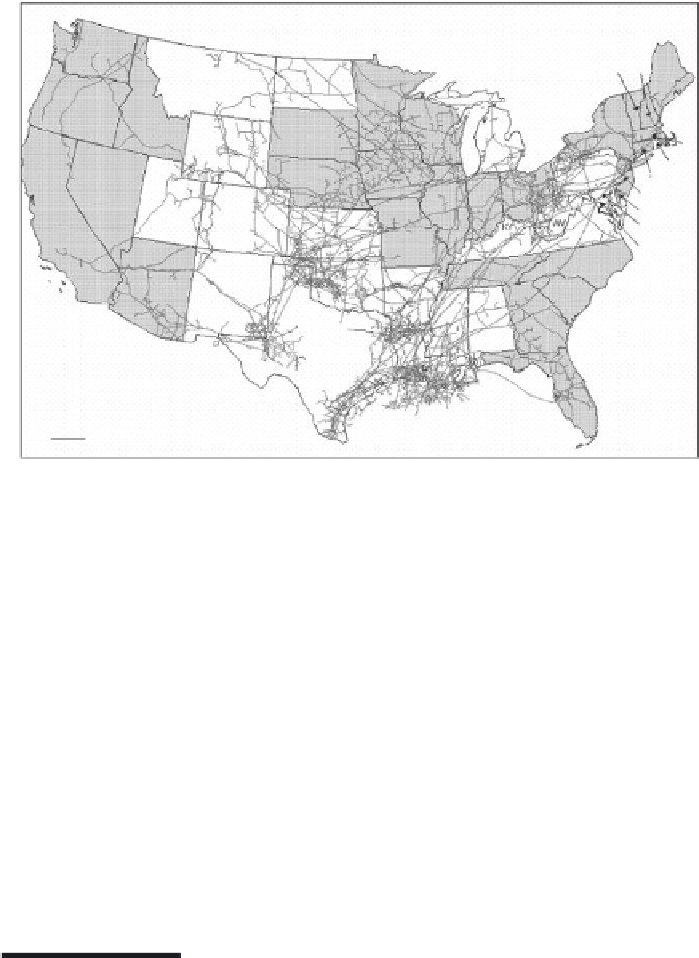Environmental Engineering Reference
In-Depth Information
WA
VT
NH
ME
ND
MT
MN
OR
WI
ID
MI
SD
WY
NY
MA
RI
PA
NE
CT
NJ
DE
MD
IA
IN
OH
NV
IL
UT
CO
KS
CA
VA
MO
DC
NC
TN
OK AR
NM
AZ
SC
MS
GA
AL
TX
LA
FL
= Interstate Pipeline
FIGURE 8.6
U.S. interstate pipeline system. Gray shaded states require pipeline systems for 85% or more of
their total gas demands.
systems before it reaches its final destination. The interstate portion of the
national natural gas pipeline network represents about 71% of the natural
gas mainline transmission mileage in the United States. The 30 largest inter-
state pipeline companies own about 77% of all interstate natural gas pipeline
mileage and about 72% (183 billion cubic feet [Bcf]) of the total capacity avail-
able within the interstate network.
Some of the largest pipeline capacities exist on natural gas pipeline sys-
tems that link the natural gas production areas of the Southwest with the
other regions of the country. Sixteen of the 30 largest U.S. natural gas pipe-
line systems originate in the Southwest and 4 others depend heavily on sup-
plies from the Southwest.
CustomerSegments
Underground natural gas storage has traditionally been developed and used
by pipelines and LDCs to optimize long haul capacity. Market area storage
provided incremental city gate deliveries at the time required and in excess
of long haul pipeline capacity. The natural gas industry invested in storage
assets periodically as new market area deliverability was required. Prior to

